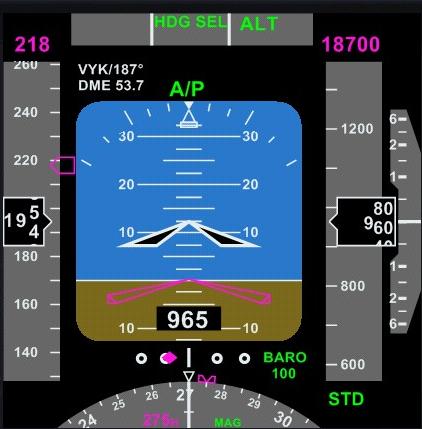Disclaimer: The following is a presentation of a recent
crash and discussion based on published information. Analysis of this
information is that of the author of this report.
The recent crash of a Boeing 777 at SFO was very disturbing
when one had the chance to analyze the data presented. Mainly, it seemed that
no one was minding the shop. The defense of the flight crew that hinges on the
autothrottle is almost ludicrous. I compare it to the driver who is caught speeding
along at 75 telling the trooper that “I had the speed control set at 60”. It
hinges on responsibility. Whether driving a car or more critically, flying a
commercial airliner. The pilot in charge or the driver behind the wheel must be
accountable for the actions of their vehicles, whether a plane or a car.
In doing some research on the internet, I was fortunate to
come upon a detailed analysis* of a 2008 Boeing 777 crash that occurred at
Heathrow airport in Great Britain. Due to the exemplary (and what one should
expect) actions of the flight crew, a serious disaster was averted.
Let me present some facts about the Boeing 777 before
proceeding further about specific actions. It entered the flight line in 1994.
There have been only two or three hull type accidents since inception, the one
above included. The recent crash is of particular interest as there was no
apparent mechanical problem noted. The only area in question, according to the
three pilots, referred to the function of the autothrottle, an automated
throttle control linked to the autopilot etc.
Now let me get into some of the features of the B777. I just
finished reading that it was designed using the fly by wire (fbw) concept. This protects the airplane from control
inputs that might cause structural damage or exceed safe flight conditions e.g.
a stall. On the pilots instrument panel as part of the primary display,
specific warnings are shown when the plane is flying below the minimum maneuver
air speed. The crashed plane at SFO was flying dangerously below safe
airspeeds. Therefore I must assume that ample warnings were available. What was
done by those pilots? Good question, it doesn’t seem like enough.
By comparison, the flight crew of the* B777 landing at
Heathrow in 2008 did everything right. They followed established procedures,
learned and practiced over their entire careers. When on final approach into
Heathrow, there was a sudden decrease in thrust in both engines occurring
almost simultaneously, due to an undetectable ice accumulation in the fuel
system. The autothrottle was engaged at the time. The co-pilot, flying at the
time advanced the throttles to try to increase engine thrust. However there was
no response from the idling engines. The plane started slowing to below minimum
safe speeds and the plane started to sink towards the airport outer boundary.
The auto-pilot tried to pitch the nose up, but as this would further decay the
airspeed, it had to be disconnected by the copilot. While the co-pilot was
lowering the nose of the plane to prevent a stall, the captain was wisely
reducing the flap setting to 25 degrees to decrease drag. But, alas it was too
late to stop the inevitable, and the plane sank further until striking the
ground just short of the runway. There was only one passenger injury, no
deaths. The plane was a total wreck.
That the flight crew performed admirably is an
understatement. When one compares what apparently the flight crew of the Asiana
plane did, or rather didn’t do it is appalling. In reading further about the
777, it is stressed that there are all kinds of low speed warnings, prior to
“stick shaker”. According to the flight report, there was a “master caution
aural warning, indicative of “”airspeed low””. What more was needed to alert the crew of
three including a high time instructor? The accompanying picture above, taken
from the cited article is an example of a typical (quite visible) airspeed to
the left of the main screen.
Well now I hope you have a good idea of what can be done in
a time of crisis with an airliner at near stall speeds only a few hundred feet
above the ground. But more importantly I want to discuss responsibility in the
cockpit. The pilot in charge (PIC) must know what is happening at all times.
That means monitoring lots of data such as airspeed and attitude perhaps the
most basic. When the plane is flown with the autopilot engaged, one could
easily assume that all is well and become complacent. The same thing with the
autothrottle that commonly is linked to the autopilot. These automated systems
however are not absolutely infallible and must be monitored. If they do indeed
fail or inadvertently disconnect, the pilot must be ready to immediately take
over. If not a duplication of what happened on final to SFO could happen again
i.e. passively sit by as the airspeed and altitude bleed away as the plane
crashes to the ground.
Remember that the pilot in charge is responsible for the safety
of his/her crew and passengers. Complacency just won’t cut it. You may get away
with it for a while, but eventually some form of disaster awaits.
*Aircraft Accident Report 1/2010, Report on the accident to
Boeing 777-236ER, G-YMMM at London Heathrow Airport on 17 January 2008


